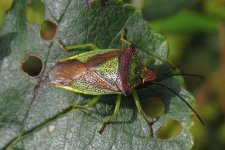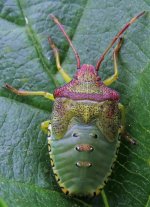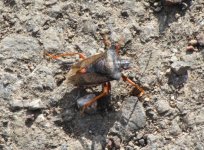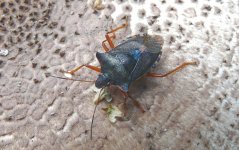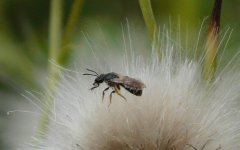Shieldbugs
I have taken a general Interest just lately In different things around me
And Its generally my conservatory these wee beasties come Into anything
From butterflies, parasitic wasps, hoverflies, droneflies, even a common damselflie once, and yes occasionally shieldbugs, I have Issues trying to
Download onto the forum Itself so I generally download onto the tv forum
Thou I have had technical Issues downloading onto the site, a week or two
Back I videoed a shieldbug In my conservatory To get It to walk I had to
Nudge It with my finger, on your posts you mention hawthorn shield bug
I,ve not looked it up but somewhere in my mind I have seen that before
regarding this shieldbug I will try and download It here hopefully the site
Techies have sorted the problem out for me to download fingers crossed.
Hi paulHello Harry
I'll certainly be checking through the archived articles and looking your stuff up before next spring.
I'm not sure if I'll be going down the beating tray route though, as although it's obviously an essential tool for recording purposes, my main objective is to get in-situ photos of the shieldbugs whenever possible. I'm prepared to accept that I'm not going to find everything!
Incidentally, although the year may be over for Parent Bugs, there's still plenty of SBs up and about at the moment. I counted six different species today: Green (2) and Hawthorn (1) on Alder in Kingmoor (Carlisle), and Bronze (3), Spiked (6 - including a mating pair), Gorse (3) and Birch (2) on Glasson Moss. Needless to say I didn't find anything I was actually looking for!
Paul
I have taken a general Interest just lately In different things around me
And Its generally my conservatory these wee beasties come Into anything
From butterflies, parasitic wasps, hoverflies, droneflies, even a common damselflie once, and yes occasionally shieldbugs, I have Issues trying to
Download onto the forum Itself so I generally download onto the tv forum
Thou I have had technical Issues downloading onto the site, a week or two
Back I videoed a shieldbug In my conservatory To get It to walk I had to
Nudge It with my finger, on your posts you mention hawthorn shield bug
I,ve not looked it up but somewhere in my mind I have seen that before
regarding this shieldbug I will try and download It here hopefully the site
Techies have sorted the problem out for me to download fingers crossed.





